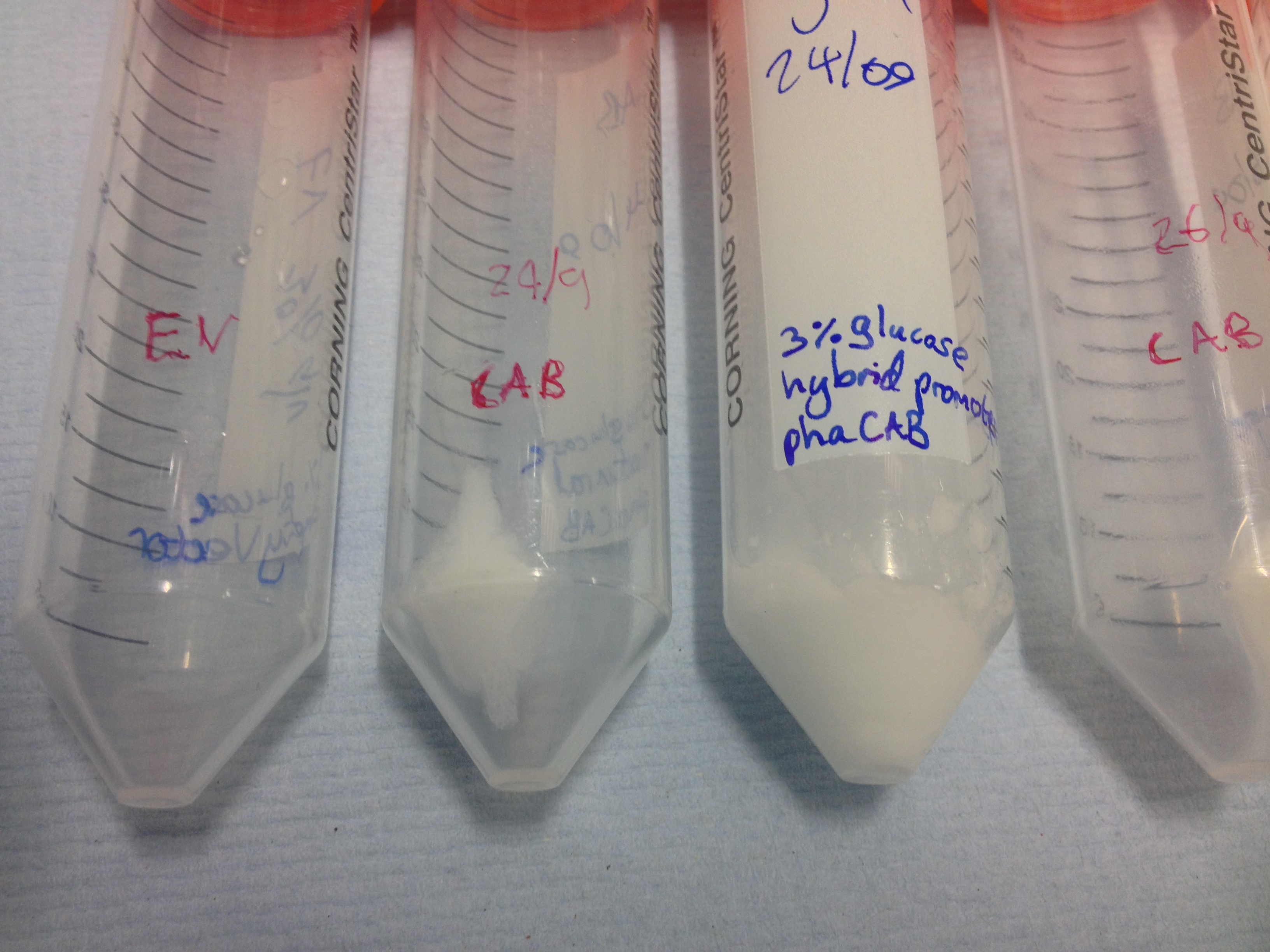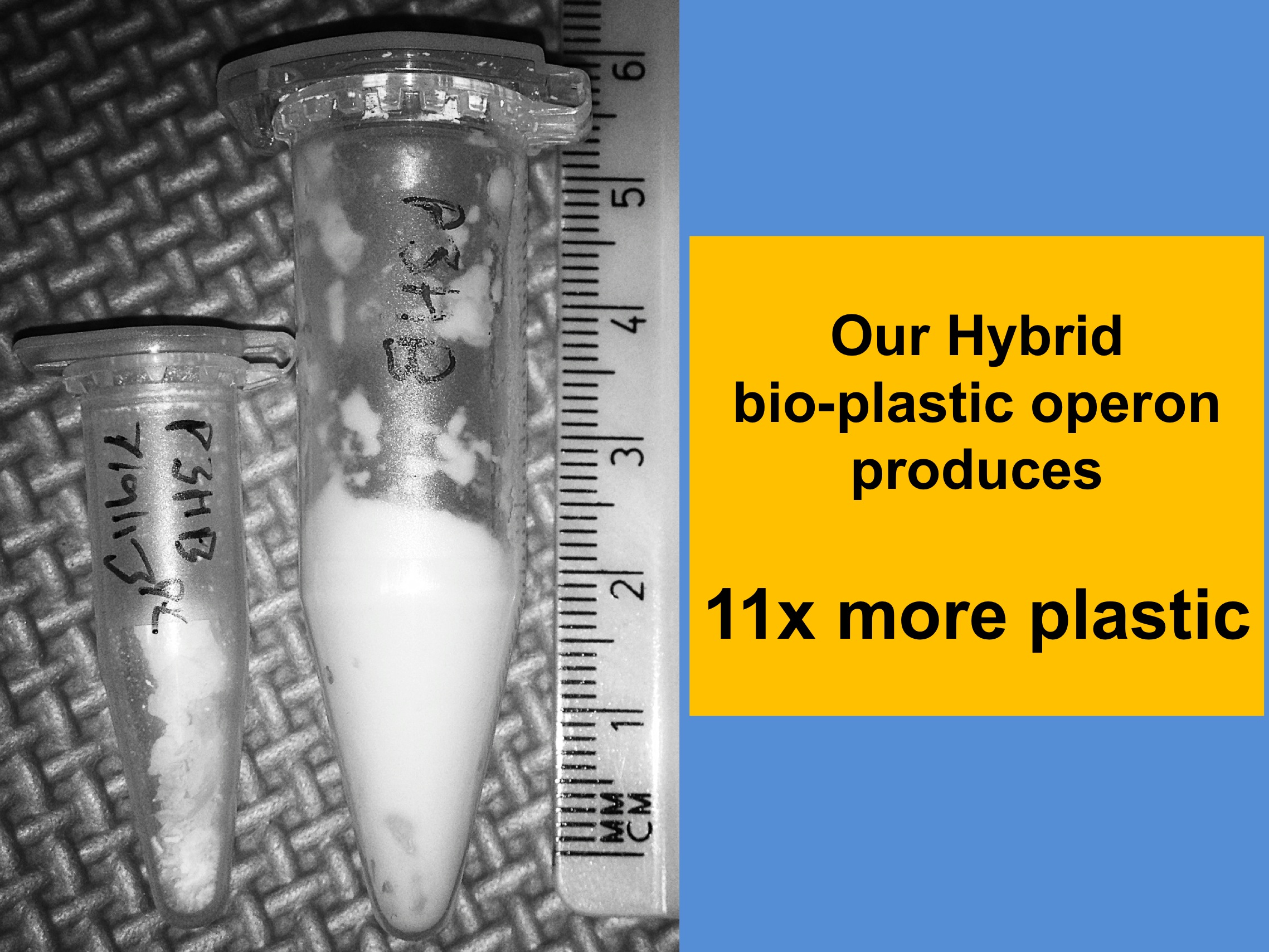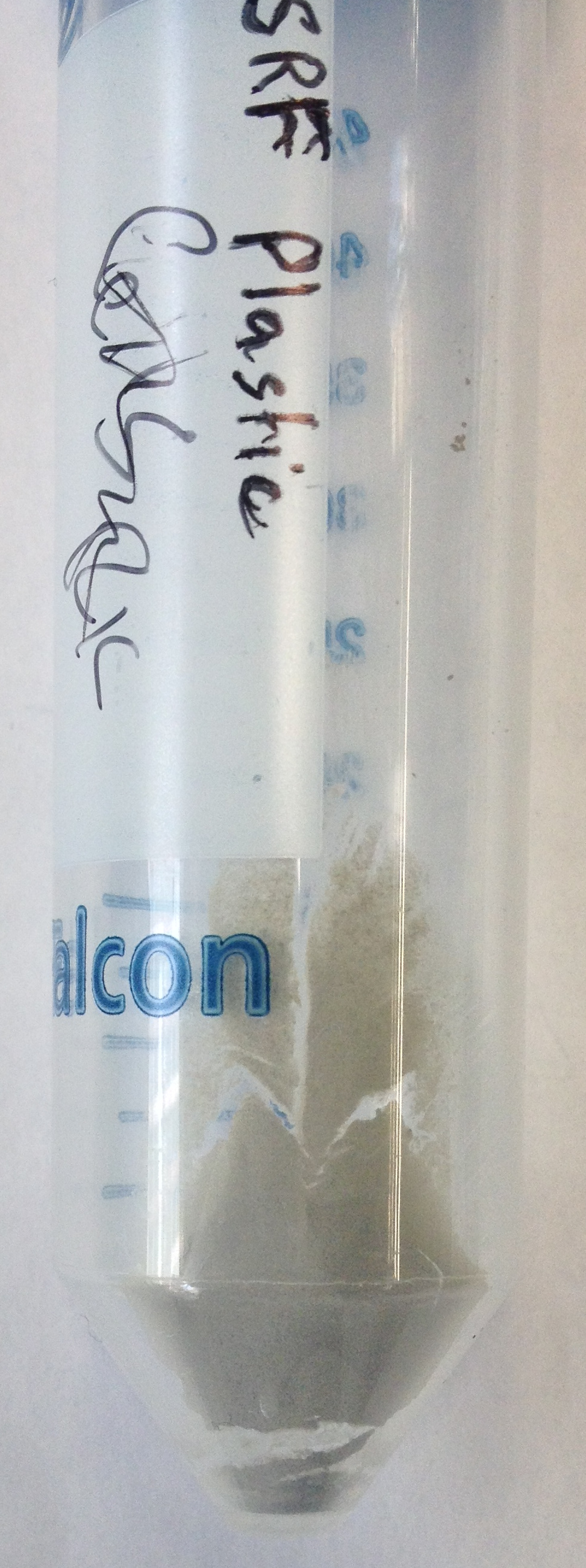Team:Imperial College/PHB production
From 2013.igem.org
Iain Bower (Talk | contribs) |
|||
| Line 1: | Line 1: | ||
{{:Team:Imperial_College/Templates:header}} | {{:Team:Imperial_College/Templates:header}} | ||
<h1>PHB production</h1> | <h1>PHB production</h1> | ||
| - | |||
| - | |||
<h2 class="clear">Nile red staining</h2> | <h2 class="clear">Nile red staining</h2> | ||
Revision as of 22:48, 4 October 2013
Contents |
PHB production
Nile red staining
O/N cultures of MG1655 transformed with either control or phaCAB plasmid were spread onto LB-agar plates with 3% glucose and Nile red staining.
Conclusion: The red staining indicates the production of P(3HB). More importantly our new Biobricks [http://parts.igem.org/wiki/index.php?title=Part:BBa_K1149051 hybrid promoter phaCAB BBa_K1149051] and [http://parts.igem.org/wiki/index.php?title=Part:BBa_K1149052 constitutive phaCAB BBa_K1149052] produce more P(3HB) than the native phaCAB operon
Extraction of P3HB
We extract P3HB using a technique which first disrupts the cell membranes and then degrades the remaining parts of the cell with bleach. See the protocols section for more details.
Once the cultures have been centrifuged and the supernatant poured off , the biomass is clearly seen as cell pellets.
Purification of P(3HB)
P(3HB) from Mixed Waste
|
 "
"










